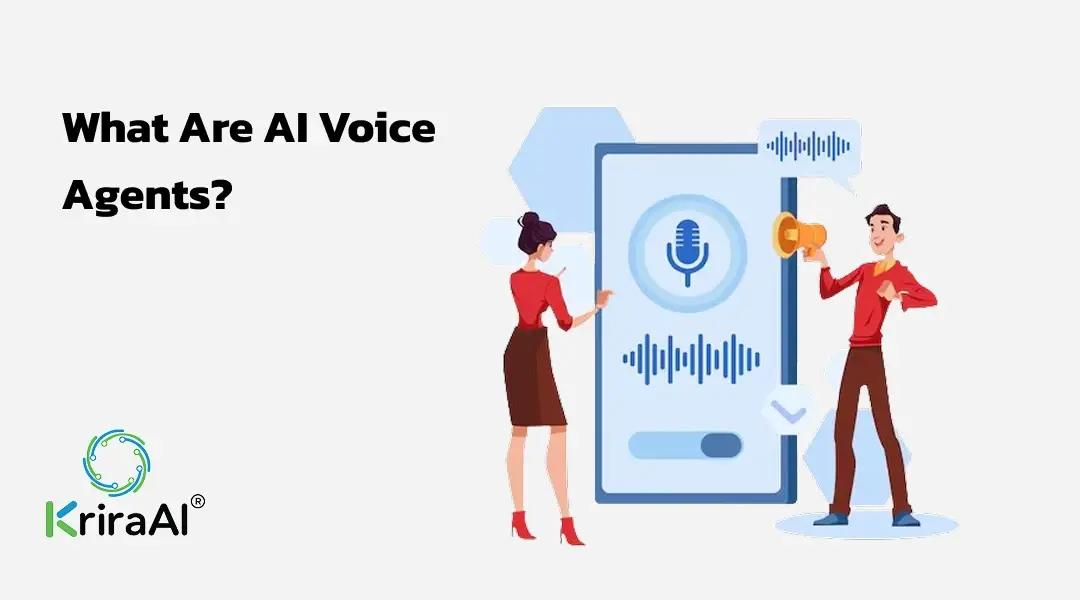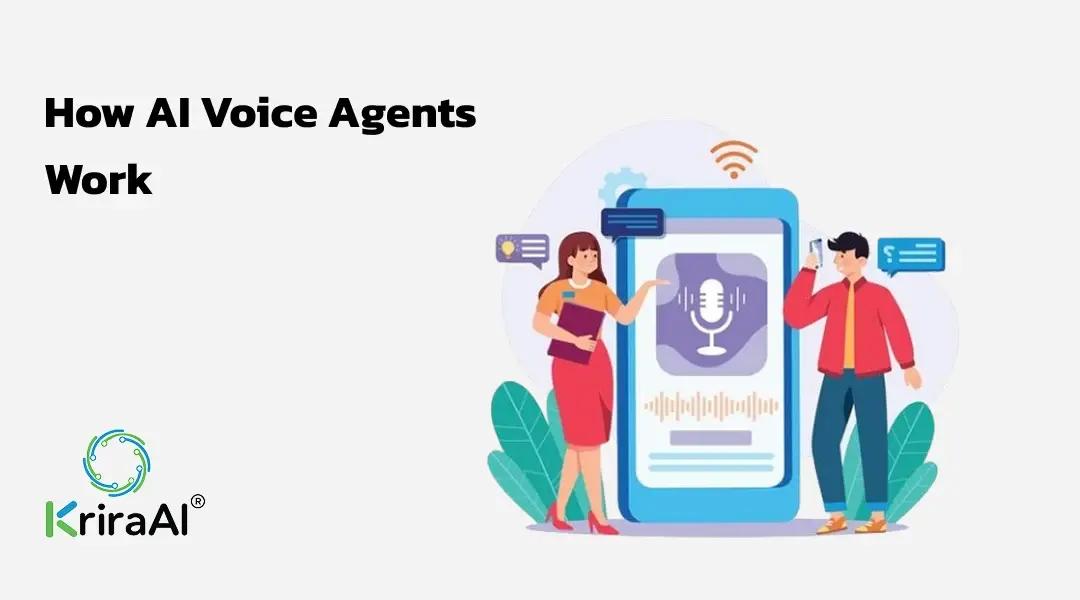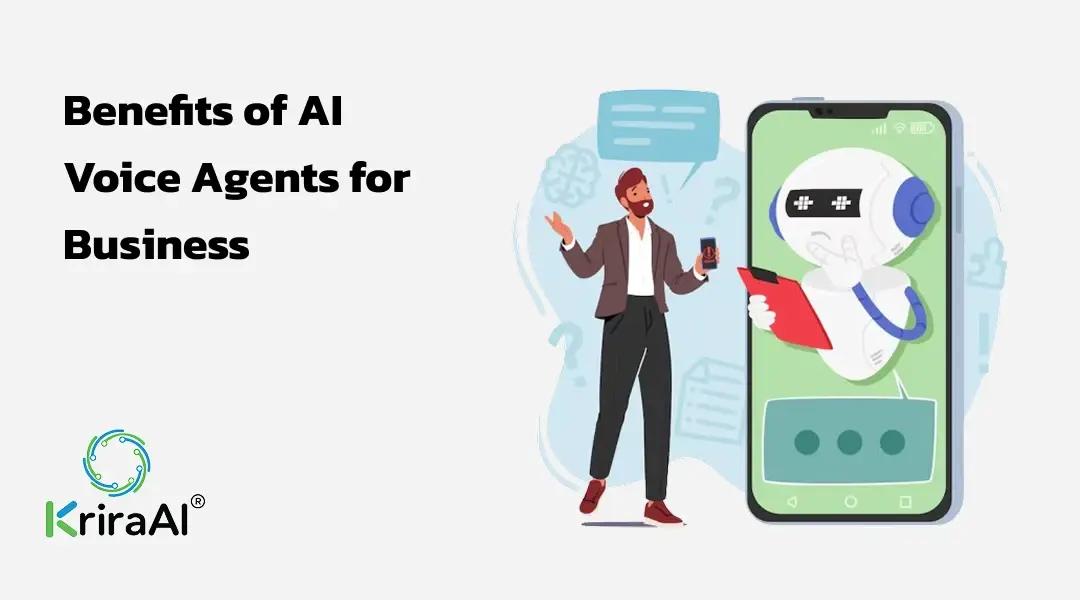The Ultimate Guide to Understanding AI Voice Agents
Let’s start with honesty. The term “AI voice agent” has been twisted into something it’s not. Too many vendors dress up basic IVR flows with a robotic voice and call it “conversational AI.” That’s not just misleading—it’s dangerous. Because it creates expectations that tech can’t meet.
Here’s what this guide is: a real-world explanation from someone who’s built these systems. I’m not here to sell you fluff. I’m here to help you understand how this works, where it fits, and whether it’s worth your investment.
What Are AI Voice Agents?

At its core, an AI voice agent is software that can talk—and more importantly, listen—like a human. It’s a system that can understand what you say, figure out what you mean, and respond intelligently.
It’s the brain that answers your “Where’s my order?” without escalating to a human. It’s the voice that books your appointment, cancels your ticket, or files your leave request at 2 AM.
Unlike traditional IVRs ("Press 1 for billing..."), AI voice agents can interpret intent in real-time. They're not following a fixed flow—they’re making decisions in the moment.
Why Are They Gaining Popularity?
Simple: because the economics, the expectations, and the tech have finally aligned.
Post-pandemic contact center chaos made 24/7 support non-negotiable.
AI got better—especially with open-source speech models and foundation models.
Customer patience got shorter.
Add to that rising labor costs, staffing headaches, and the growing demand for voice interfaces in mobile and IoT—and you've got a perfect storm.
Also, voice is just… human. We speak before we write. That familiarity creates trust faster than any text interaction can.

Let’s break the system down like a developer would.
ASR (Automatic Speech Recognition): Captures spoken audio and converts it into text. Think of it as the ears.
NLP (Natural Language Processing): Figures out intent, emotion, and context. This is the brain.
Dialog Manager: Decides the next best action—answer, ask, escalate, or clarify.
TTS (Text to Speech): Converts the bot’s decision back into speech. That’s your voice.
A great AI voice agent loops this cycle seamlessly—with memory, tone, and sometimes, empathy.
Key Technologies Behind Voice AI
Let’s get more technical—but stay human.
ASR (Google’s Wav2Vec, Whisper by OpenAI): Recognizes and transcribes even messy speech.
NLP Engines (Rasa, spaCy, OpenAI GPT): Contextual understanding and intent detection.
Dialog Managers (Dialogflow CX, Microsoft Bot Framework): Orchestrates back-and-forth.
TTS Engines (Amazon Polly, Google WaveNet): Makes voices sound human—not like a 1990s robot.
Bonus Layer:
Voice Biometrics: Identify users by how they sound.
Emotion Detection: Gauge tone, urgency, mood.
You don't have to master these. But you do need a partner who can wield them wisely.
Real-Time Voice Interaction vs Traditional Bots
Text chatbots can afford to be slow. Voice bots can’t.
When there’s a pause longer than 600ms, it feels awkward. You’ve probably hung up on bots that made you repeat yourself three times, right? That’s poor latency or weak NLP.
Good AI voice agents do real-time speech analysis, stream inputs, predict user intent before you finish talking, and speak naturally—without weird robotic pacing.
That’s why it costs more to build right. But it pays back in user trust.
Types of AI Voice Agents
Inbound vs Outbound
Inbound: Customer calls the agent. Think call centers, IVRs, post-sales support.
Outbound: Agent calls the customer. Think appointment reminders, debt collections, delivery confirmations.
Conversational vs Transactional
Conversational Agents: Designed to feel like you're talking to a human. Flexible, memory-driven, multi-turn dialogue.
Transactional Agents: Task-specific. You say what you want. It does it.
Rule-Based vs Autonomous
Rule-Based: If/then logic. Limited scope, faster to deploy.
Autonomous: Built on LLMs + context memory. Can pivot mid-convo, personalize responses, and adapt over time.
Use cases vary. Don’t throw GPT at everything. Sometimes a simple flow beats complexity.
Top Business Use Cases
Here’s where we’ve seen success:
Customer Support Automation: Tier-1 query handling, refund updates, shipment status.
Appointment Scheduling: “Can I move my dental cleaning to Friday?”—done in 20 seconds.
Banking: Balance checks, card blocking, voice authentication.
Healthcare: Lab result delivery, appointment booking, symptom triage.
eCommerce: Order tracking, complaints, returns, and exchanges.
Internal IT & HR: Password resets, leave requests, helpdesk issues.
In one deployment, we reduced a client’s support queue by 64% in the first month. That’s not magic. That’s just architecture + empathy.
Benefits of AI Voice Agents for Business

Let’s break down the ROI:
24/7 Availability: Night shifts, holidays, weekends—covered.
Operational Cost Reduction: One agent can handle 300–500 calls/hour.
Scalability: Spinning up new capacity doesn’t mean hiring.
Consistency: Every customer gets the same brand tone. No bad days.
Multilingual Support: Regional languages? No problem. Train once, scale globally.
Personalization: “Hi Ramesh, I see you last called about your EMI. Want me to continue from there?”
It’s not just about saving money. It’s about building smarter relationships at scale.
Voice AI vs Chatbots: What’s the Difference?
Voice AI:
Human-like, ideal for mobile users
Real-time, faster interactions
Emotionally richer experience
Chatbots:
Easier to build
Better in low-bandwidth areas
Great for simple tasks or internal tools
Rule of Thumb:
Voice for urgency (travel, support, healthcare)
Text for convenience (eCommerce, SaaS onboarding, HR)
How to Choose the Right AI Voice Agent Platform
I’ve evaluated dozens of them. Some impress on paper. Few work in real business conditions.
Ask these:
Can it support multiple languages and dialects?
Can it integrate with your backend tools (Salesforce, Zoho, internal APIs)?
Does it support human handoff mid-call?
Can you update flows yourself, or are you locked into vendor dependencies?
How’s the pricing structured? Pay-per-call? Monthly active users?
Challenges and Limitations
Let’s not pretend it’s all smooth sailing.
Accent & Language Recognition: India alone has 22 official languages. Your ASR needs to handle that nuance.
Privacy & Compliance: Especially in finance and healthcare—GDPR, HIPAA, RBI guidelines.
User Acceptance: Not everyone likes talking to machines. You need smart fallback options.
Misunderstandings: “Cancel my order” vs “Track my order” can sound similar. Context matters.
Build with humility. Test with empathy.
The Future of AI Voice Technology
We’re not far from voice agents with personality, memory, and emotional intelligence.
Generative AI + Voice = Free-flowing, creative conversation.
Agents with Memory: “Hey, remember I called last week about…” and it does.
Emotion-Aware Voice Agents: Detects anger or stress and adapts tone.
Multi-modal AI: Voice, face, sentiment—combined.
The voice won’t just respond. It’ll relate.
Getting Started with AI Voice Agents
Here’s a simplified playbook:
Pick a use case: Be specific. Don’t boil the ocean.
Choose the right tech stack or partner.
Design conversation UX: Map tone, branching logic, error handling.
Integrate with your backend systems: CRM, ticketing, inventory, etc.
Pilot it with real users. Iterate.
Track performance using these metrics:
Voice AI Performance Metrics:
Call Containment Rate
Fallback-to-Human %
Intent Match Accuracy
User Satisfaction (CSAT, NPS)
First Call Resolution (FCR)
FAQs
No—and they shouldn’t. They augment your team by handling the repetitive grunt work.
With custom training, yes. We’ve done Gujarati, Tamil-English blends, even Marathi inflections.
Yes, with WebRTC or SIP integration, and some clever engineering.
Yes—with proper encryption, compliance, and access controls.
Anywhere from 3 weeks to 3 months, depending on complexity.

CEO
